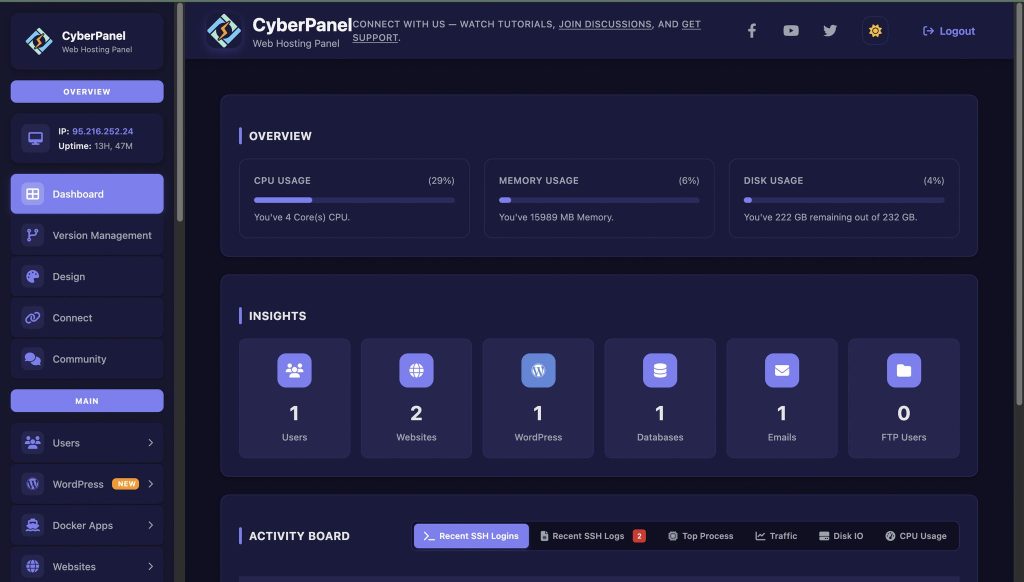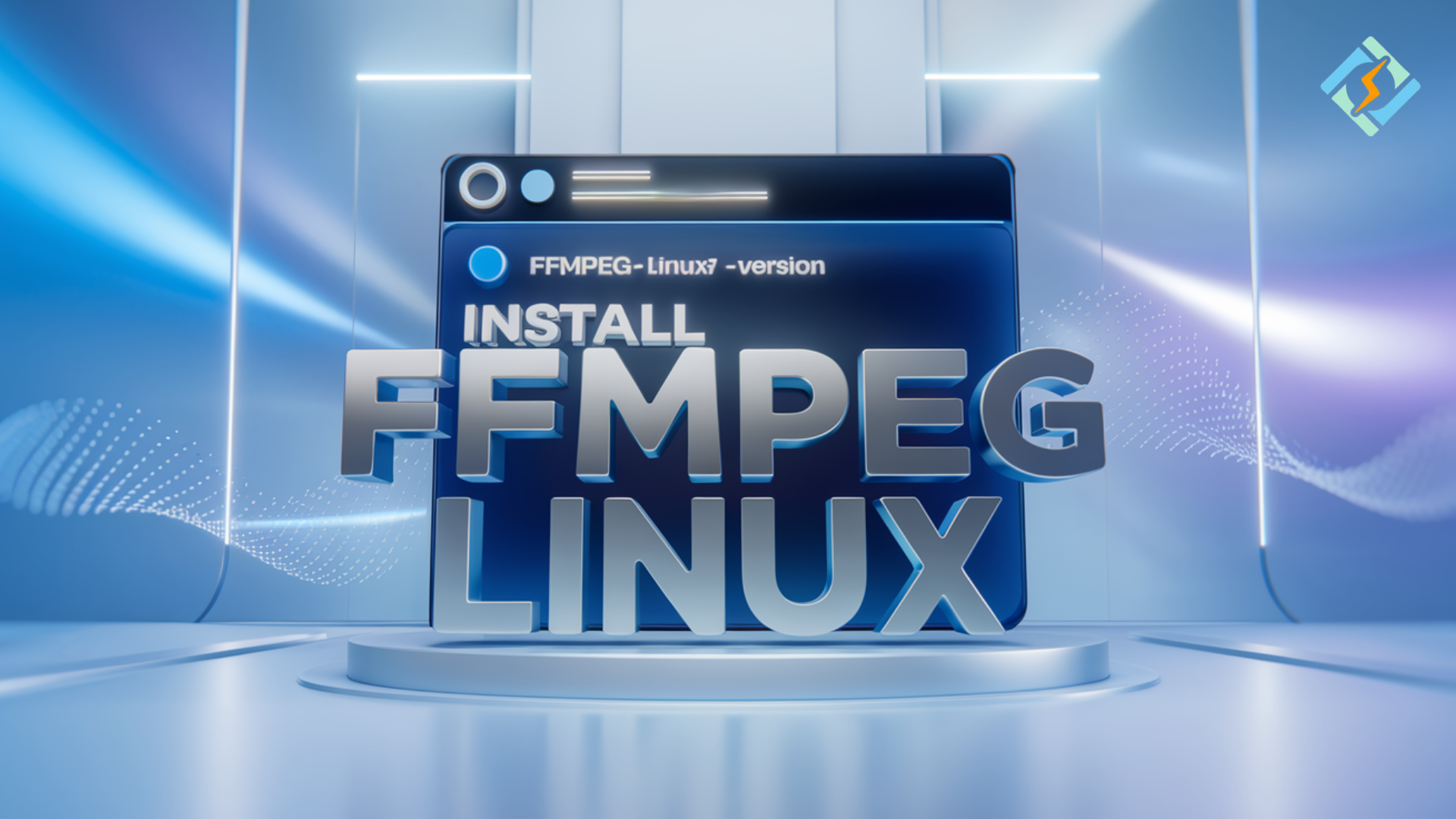When you are working with video or audio on Linux, you need FFmpeg. This is a powerful and open-source tool. It allows you to record, convert, stream, and process multimedia files. Whether you are a developer, system administrator, or content creator, you should know how to install FFmpeg Linux. It saves you hours of troubleshooting.
Many Linux users face difficulty because Linux distributions differ in how packages are managed. In this article, we are going to discuss the latest and reliable methods for FFmpeg installation on Linux.
Let’s dive in together for FFmpeg install Linux!
What is FFmpeg?
FFmpeg is an open-source and free command-line tool. It is used to handle video, audio, and other multimedia files. It supports almost every format and codec, making it the backbone of many video platforms and streaming applications.
Now, let’s discuss FFmpeg Linux install.
How to Install FFmpeg Linux?
The fastest way to install FFmpeg Linux is by using your distribution’s package manager. For example:
Get exclusive access to all things tech-savvy, and be the first to receive
the latest updates directly in your inbox.
Ubuntu or Debian:
sudo apt update
sudo apt install ffmpeg -y
Fedora:
sudo dnf install ffmpeg -y
Arch Linux:
sudo pacman -S ffmpeg
How to Verify if FFmpeg is Installed?
You can use the following command to verify if FFmpeg is installed:
ffmpeg -version
Output:
ffmpeg version 6.1.1 Copyright (c) ...
built with gcc 13.2.0
configuration: --enable-gpl ...
If you see version details, it means FFmpeg is successfully installed.
How to Install the Latest FFmpeg Version on Linux?
When you use package managers, they often provide you with older versions. The following are a few methods to install the latest version of FFmpeg on Linux:
Method 1: Install via PPA (Ubuntu or Debian)
sudo add-apt-repository ppa:savoury1/ffmpeg4
sudo apt update
sudo apt install ffmpeg -y
See the safe way to install latest stable ffmpeg when ppa is not working.
Method 2: Build from Source
sudo apt update
sudo apt install build-essential git libx264-dev libx265-dev libvpx-dev libfdk-aac-dev -y
git clone https://git.ffmpeg.org/ffmpeg.git ffmpeg
cd ffmpeg
./configure --enable-gpl --enable-libx264 --enable-libx265 --enable-libvpx --enable-libfdk-aac
make -j$(nproc)
sudo make install
This ensures maximum codec support and the latest features.
How to Un-Install FFmpeg Linux?
Here is how you can uninstall FFmpeg on Linux:
For Ubuntu or Debian
sudo apt remove --purge ffmpeg -y
For Fedora
sudo dnf remove ffmpeg -y
FFmpeg vs Other Tools
| Feature | FFmpeg | HandBrake | VLC Media Player | OBS Studio |
|---|---|---|---|---|
| Format Support | Almost all audio/video formats | Limited | Limited | Streaming focused |
| Command-line Automation | Yes | Partial | No | No |
| Editing Features | Basic cuts, filters | Presets only | Very basic | Advanced live mixing |
| Streaming Support | Yes (RTMP, HLS) | No | Partial | Yes |
| Hardware Acceleration | Yes | Yes | Limited | Yes |
Common Errors for Linux Install FFmpeg and Fixes
| Error Message | Cause | Fix |
|---|---|---|
Unknown encoder 'libx264' | H.264 codec not installed | Install libx264 with FFmpeg build |
Invalid argument | Wrong order of parameters | Check syntax, place -i before output |
Stream specifier does not match | Wrong stream mapping | Use -map with correct stream index |
| No audio in output | Audio stream not mapped | Add -map 0:a |
Basic Usage of FFmpeg in Linux
When you install FFmpeg Linux, you can use it for different purposes. FFmpeg works entirely from the terminal, and while it has hundreds of options, you only need a few basic commands to get started. Let’s look at some basic usage of FFmpeg:

Converting a Video File:
ffmpeg -i input.mp4 output.aviThis command will take a video in .mp4 format and converts it into .avi. You can replace the extensions with whatever formats you need.
Extracting Audio from Video:
ffmpeg -i input.mp4 audio.mp3
Using this command, you can strip out the audio track and save it as an MP3 file.
Compressing a Video:
ffmpeg -i input.mp4 -vcodec libx264 -crf 28 output.mp4
In this command, the -crf value controls quality and size. A higher number means smaller file size but lower quality.
Recording Your Screen:
ffmpeg -video_size 1920x1080 -framerate 30 -f x11grab -i :0.0 output.mkv
This command will capture your Linux desktop screen in real-time.
Role of CyberPanel in FFmpeg-based Applications

FFmpeg works at the system level. However, you may want to integrate it with web applications. CyberPanel, a next-gen web hosting control panel, makes this possible for you.If you host video platforms, streaming services, or media-heavy websites, with CyberPanel:
- You can deploy FFmpeg-enabled servers easily.
- You can manage multiple Linux servers with one dashboard.
- You can optimize performance for video processing.
- You can also automate SSL, firewall, and backups alongside FFmpeg apps.
This reduces complexity and speeds up deployment, especially for video streaming platforms and content delivery projects.
People Also Ask
Can I install FFmpeg Linux without the root access?
Yes, you can. You can build FFmpeg from source in your home directory without sudo privileges.
Will I get FFmpeg pre-installed on Linux?
No. You have to install FFmpeg Linux manually.
How can I enable GPU acceleration in FFmpeg?
You need to compile FFmpeg with CUDA or NVENC support. Example: ./configure --enable-nonfree --enable-cuda --enable-nvenc.
Wrapping Up!
To sum up, you can open doors to powerful video and audio processing after installing FFmpeg on Linux. And you know what? You can have it all right from your terminal. With just a few commands, you can convert formats, record screens, extract audio, and much more. Whether you installed it through your package manager or built it from source, FFmpeg is now ready to make your media tasks faster and easier.
Ready to install FFmpeg on Linux? Simplify your media workflow and enhance your Linux skills to the next level!



